.gif) VIARTIS � |
||||||
|
PARKINSON'S DISEASE |
||||||
| � � |
||||||
|
� � � � |
PARKINSON'S DISEASE NEWS � |
� � � � � � � � � � � � � � � |
||||
|
�JANUARY 2008 31st January 2008 - New research strong placebo effect in parkinson's disease
Movement Disorders [2008] Jan 28; [Epub ahead
of print] (Goetz CG, Wuu J, McDermott MP, Adler CH, Fahn S, Freed CR,
Hauser RA, Olanow WC, Shoulson I, Tandon PK, Leurgans S; Parkinson Study
Group.)
Complete abstract
� 30th January 2008 - New research parkinson's disease patients do better without treatment Journal of Neurology, Neurosurgery and Psychiatry [2008] Jan 25; [Epub ahead of print] (Asimakopoulos P, Caslake R, Harris CE, Gordon JC, Taylor KS, Counsell C.) Complete abstract Parkinson's Disease drugs become progressively more counterproductive. L-dopa enables patients to form more dopamine, but it also reduces a person's ability to produce their own L-dopa. Dopamine agonists stimulate dopamine receptors, but in time cause dopamine receptors to become less progressively less sensitive. Consequently, it has been debated whether to adopt a "wait and watch" strategy or to initiate drug therapy soon after being diagnosed with Parkinson's Disease.
� 29th January 2008 - New clinical trial Nexalin Advanced Therapy for parkinson's disease Nexalin Advanced Therapy is a technology that uses a mild stimulation of the brain to treat a variety of mood disorders, specifically Anxiety, Depression, and Insomnia. The waveform of Nexalin is administered by placing medical grade conductive pads produced specifically for the Nexalin technology on the forehead and behind each ear, which are connected to the Nexalin device with thin cables.
� 28th January 2008 - New blog THE RESULT OF STEM CELL SURGERY IN CHINA On 7th January 2008, Linda and John Fratcher arrived in China in order to have stem cell surgery to rid Linda Fratcher's Parkinson's Disease. For years it has been claimed by some that the use of stem cells would be the cure for Parkinson's Disease. In China and elsewhere, due to there being fewer restrictions, stem cell surgery is already being carried out. The stem cell surgery operation on Linda Fratcher has now been completed. However, she still has Parkinson's Disease, and is still having to take Sinemet. They are continuing to detail what happens to her after the operation day by day in a blog titled� "Linda and John in China", which is on the Parkinson's Rebels web site. For more information go to Linda and John in China.
� 27th January 2008 - New research should l-dopa dose be reduced when switching to stalevo ?
European Journal of Neurology [2008] Jan 22;
[Epub ahead of print]
Complete abstract
26th January 2008 - New research the mystery of the kii peninsula Rinsho Shinkeigaku [2007] 47 (11) : 966-969 (Kokubo Y.) Complete abstract� Rinsho Shinkeigaku [2007] 47 (11) 962 -965 (Kuzuhara S.) Complete abstract Rinsho Shinkeigaku [2007] 47 (11) : 695-702 (Kuzuhara S.) Completeabstract The Kii Peninsula is a remote part of the Japanese coast. On the mountainous Kii Peninsula, especially in the villages of Hohara and Kozagawa, Parkinson's Disease symptoms have almost been the norm, but nobody knows why. The initial symptoms are Parkinsonian gait and amnesia, followed by akinesia, rigidity and occasional tremor. Patients then go on to develop dementia and ALS, which has been known in the area since 1689.
� 25th January 2008 - News report STALEVO SURPASSES SINEMET IN CLINICAL TRIALS Sinemet is a combination of L-dopa plus Carbidopa, which prevents L-dopa from breaking down before it reaches the brain. Stalevo is a combination of L-dopa and Carbidopa, and also Entacapone. For more information go to Stalevo. Stalevo also includes Entacapone (a COMT inhibitor) because it prolongs the activity of L-dopa. Novartis carried out a clinical trial on over 400 people with Parkinson's Disease.� The aim of the study was to determine whether treatment with Stalevo provides more effective relief from Parkinson's Disease than the Sinemet combination of L-dopa and Carbidopa.
� 22nd January 2008 - New research Electromyograph differentiateS between parkinsonian and essential tremor Journal of Neurology [2008] Jan 22; [Epub ahead of print] (Breit S, Spieker S, Schulz JB, Gasser T.) Complete abstract A quarter of people with Parkinson's Disease are wrongly diagnosed. Many of them have Essential Tremor instead of Parkinson's Disease. Having tremor often leads to somebody being assumed to have Parkinson's Disease even though nearly a third of people with Parkinson's Disease don't have tremor. The differential diagnosis of tremor is mainly based on clinical criteria. Nevertheless, these criteria are in some cases not sufficient to differentiate between different types of tremor. Long-term use of EMG (Electromyography) has proven to be a reliable method for the quantification of tremors. EMG is performed using an electromyograph, which detects the electrical activity generated by muscle cells when they contract. For more information go to Electromyography.
� 21st January 2008 - New book Living with Parkinson's Disease David Belgum (editor)
� 20th January 2008 - New research BROMOCRIPTINE FAILS TO BENEFIT EARLY PARKINSON'S DISEASE Cochrane Database Systematic Review [2007] Oct 17 (4) : CD002258 (van Hilten JJ, Ramaker CC, Stowe R, Ives NJ.) Complete abstract; Coochrane Database Systematic Review [2007] Oct 17 (4) : CD003634 (van Hilten JJ, Ramaker CC, Stowe R, Ives NJ.) Complete abstract Bromocriptine (which is sold as Parlodel) is a dopamine agonist that is used� in the treatment for Parkinson's disease. Early studies suggested that treating patients with bromocriptine before starting L-dopa would delay the onset of side effects such as dyskinesia. For more information go to Bromocriptine. A complete review of the medical literature was carried out in order to assess whether this was true.
���������������������������������������������������������������������������������������������������� 19th January 2008 - News report MICE WITH HUMAN BRAINS FOR PARKINSON'S DISEASE RESEARCH In Singapore, scientists eager to splice human genes with animal cells are seeking public feedback on the prospect of such controversial research. A consultation paper on its website said the BAC considers human stem cell research to have considerable potential in the treatment of currently incurable diseases, such as Parkinson's disease.
18th January 2008 - News report HUMAN-ANIMAL HYBRIDS TO BE USED FOR PARKINSON'S DISEASE RESEARCH Human-animal embryos are to be created in the U.K. after scientists won approval for the practice from the Human Fertilisation and Embryology Authority (HFEA). The stem cell biology laboratory at King's College in London will be using them to study neurological diseases such as Parkinson's Disease. The hybrids are created by transferring the nuclei of human cells, such as skin cells, into animal eggs from which almost all the genetic information has been removed.
� 17th January 2008 - History USING ELECTRICITY TO TREAT PARKINSON'S DISEASE Electrotherapy was used to treat Parkinson's Disease for nearly a hundred years. French doctor Guillame Benjamin-Amand Duchenne (1806-1875), popularized the use of electrical means with his 1855 publication "On localized electrification, and on its application to pathology and therapy". �In 1868, he reported a case in which he had cured Parkinson's Disease, which was then known as paralysis agitans,�by using electrotherapy.
� 16th January 2008 - New research PARKINSON'S DISEASE CAUSED BY EATING FLYING FOXES
Life Sciences [2007] Dec 7; [Epub ahead of
print] (Karamyan VT, Speth RC.)
Complete abstract
� 14th January 2008 - New research L-DOPA CAUSES NEURODEGENERATION Journal of Neuroscience [2008] 28 (2) : 425-433 (Chen L, Ding Y, Cagniard B, Van Laar AD, Mortimer A, Chi W, Hastings TG, Kang UJ, Zhuang X.) Complete abstract Dopamine is normally produced naturally in the brain from L-tyrosine (L-tyrosine >>> L-dopa >>> dopamine). The brain regulates how much dopamine is produced by this means. However, when somebody takes L-dopa in a drug form, there is no regulation of its use by the brain. L-dopa taken as a drug indiscriminately forms dopamine. Dopamine produced in this way has been considered to be a vulnerability factor and a toxic cause of Parkinson's Disease. The assumed toxicity of dopamine is responsible for the practice of avoiding the use of L-dopa in early Parkinson's Disease.
� 13th January 2008 - New research SELEGILINE FAILS TO INCREASE THE EFFECT OF L-DOPA
Neurology [2008] Jan 9; [Epub ahead of print]
(Wahner AD, Bronstein JM, Bordelon YM, Ritz B.)
Complete abstract
� 12th January 2008 - New research STATINS REDUCE THE RISK OF PARKINSON'S DISEASE
Neurology [2008] Jan 9; [Epub ahead of print]
(Wahner AD, Bronstein JM, Bordelon YM, Ritz B.)
Complete abstract
� 11th January 2008 - New resource GOING TO CHINA FOR STEM CELL SURGERY For years it has been claimed by some that the use of stem cells would be the cure for many medical disorders, including Parkinson's Disease. Especially in the U.S.A., highly contentious debate has taken place concerning the ethics of using stem cells for use in medical treatment.
� 10th January 2008 - New research RASAGILINE (AZILECT)- A COMPREHENSIVE REVIEW
Clinical Therapeutics [2007] 29 (9) :
1825-1849 (Chen JJ, Swope DM, Dashtipour K.)
Complete abstract
� 9th January 2008 - New research THE NUMBER OF ELECTRODES ALTERS THE EFFECT OF DBS SURGERY
Neurosurgery [2007] 61 (5 Suppl 2) : 346-355
(Temel Y, Wilbrink P, Duits A, Boon P, Tromp S, Ackermans L, van
Kranen-Mastenbroek V, Weber W, Visser-Vandewalle V.)
Complete abstract
� 8th January 2008 - News report NEW ANTIOXIDANT FOR PARKINSON'S DISEASE Eucalyptus in Israel are to start producing a new antioxidant called N-acetylcysteine amide (AD4), that can be used in a variety of Neurological disorders in which oxidative stress occurs, including Parkinson's Disease, Alzheimer's Disease and Multiple Sclerosis. Oxidative stress is a process that leads to cell damage and further loss of function in medical disorders such as Parkinson's Disease. Unlike many drugs, AD4 is able to cross the blood brain barrier.
����������������������������������������������������������������������������� 7th January 2008 - News report SILENCING GENES TO RID PARKINSON'S DISEASE
The Michael J. Fox Foundation has committed
up to $3.8 million for the development of a gene silencing therapeutic to
treat Parkinson's disease. In people with Parkinson's Disease,
alpha-synuclein often accumulates in the affected cells. For more
information go to
Alpha-synuclein. In some rare
forms of Parkinson's Disease, alpha-synuclein has been shown to incline
people to develop Parkinson's Disease. It has therefore been suggested
that
Analysis : Alpha-synuclein is a common cellular symptom of idiopathic Parkinson's Disease and other medical disorders. However, no research has ever shown it to cause idiopathic Parkinson's Disease. Parkinson's Disease has long been known to be primarily due to a lack of dopamine, which is why the dopamine precursor L-dopa can have such a potent effect on ridding the symptoms. For more information go to Biochemistry of Parkinson's Disease. However, restricting the formation of alpha-synuclein would not, even in theory, increase dopamine formation. ���������������������������������������������������������������������������������������������������������������������������������������������������������������������������������� 4th January 2008 - History THE MEN THAT PRECEDED JAMES PARKINSON Parkinson's disease was first formally described in 1817 by a London physician named James Parkinson (1755-1824). Parkinson's Disease was subsequently named after James Parkinson because of his detailed description of the disorder.
� 3rd January 2008 - News report THE CAUSE OF CELL DAMAGE IN Parkinson's Disease
Journal of Clinical Investigation [2008] Jan
2; [Epub ahead of print] (Martinez-Vicente M, Talloczy Z, Kaushik S,
Massey AC, Mazzulli J, Mosharov EV, Hodara R, Fredenburg R, Wu DC,
Follenzi A, Daue)
Complete abstract
� 2nd January 2008 - New research The effect of L-dopa on speech
Movement Disorders 2007 Dec 28; [Epub ahead
of print] (Ho AK, Bradshaw JL, Iansek R.)
Complete abstract � 1st January 2008 - New research THE genetic CAUSES of parkinson's disease Acta Pharmacologica Sinica [2008] 29 (1) : 21-34 (Rosner S, Giladi N, Orr-Urtreger A.) Complete study Findings in the last decade suggest that the contribution of genetic causes of Parkinson's Disease is much greater than was previously believed. Some people have unknowingly been susceptible to Parkinson�s Disease since they were born.� Genetic forms of Parkinson�s Disease account for up to 10% of all cases of Parkinson�s Disease. The frequency is only 1%-3% of cases of late-onset Parkinson�s Disease, but is as much as 20% of young-onset Parkinson�s Disease.
�
�
|
||||||
|
� � |
||||||
.gif) |
||||||
| � | ||||||
| �2006-2007 Viartis | ||||||
| � | ||||||
| [email protected]� | ||||||
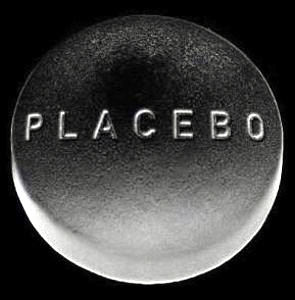 Placebo
related improvements occurred in most Parkinson's Disease clinical trials.
The effect was similarly
distributed across all six months of the
follow-up period, despite having taken nothing of any effect. Placebo
responses were similarly distributed over early, mid, and late phases of
the follow-up period. The overall placebo response was a falsely assumed
reduction of� up to 55% of all symptoms in 16% of people taking the
placebo. Patients who started with more severe symptoms were most prone to
falsely assuming there had been a positive effect, as were those that took
part in clinical trials involving surgery.
Placebo
related improvements occurred in most Parkinson's Disease clinical trials.
The effect was similarly
distributed across all six months of the
follow-up period, despite having taken nothing of any effect. Placebo
responses were similarly distributed over early, mid, and late phases of
the follow-up period. The overall placebo response was a falsely assumed
reduction of� up to 55% of all symptoms in 16% of people taking the
placebo. Patients who started with more severe symptoms were most prone to
falsely assuming there had been a positive effect, as were those that took
part in clinical trials involving surgery.
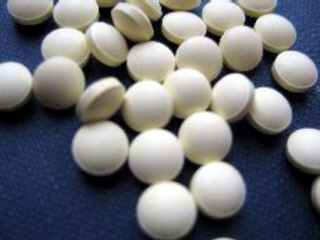 This research assessed the outcome of
the two options. Those patients that started drug treatment within the
first year actually had higher symptom scores after two years than those
patients that had remained completely untreated. Those that remained
untreated also suffered no significant deterioration in their symptoms
over the following two years. The researchers consequently suggest that
treatment of Parkinson's Disease be delayed after diagnosis.
This research assessed the outcome of
the two options. Those patients that started drug treatment within the
first year actually had higher symptom scores after two years than those
patients that had remained completely untreated. Those that remained
untreated also suffered no significant deterioration in their symptoms
over the following two years. The researchers consequently suggest that
treatment of Parkinson's Disease be delayed after diagnosis.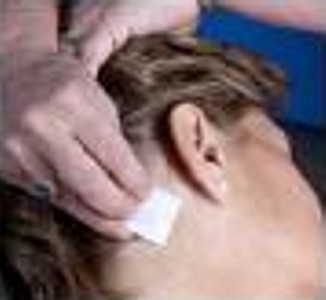 The
patient is placed in a reclining chair for the duration of a treatment
session, which typically lasts for approximately forty minutes. For more
information go to
The
patient is placed in a reclining chair for the duration of a treatment
session, which typically lasts for approximately forty minutes. For more
information go to
 Despite a number of people having undergone stem cell
surgery for Parkinson's Disease,
nobody has been
cured of it. Every patient has returned from stem cell surgery in China
with Parkinson's Disease and is still being treated for it. Reductions in patients'
Sinemet have often been due to it being replaced by Mucuna Pruriens, which
is a natural form of L-dopa. For more information go to
Despite a number of people having undergone stem cell
surgery for Parkinson's Disease,
nobody has been
cured of it. Every patient has returned from stem cell surgery in China
with Parkinson's Disease and is still being treated for it. Reductions in patients'
Sinemet have often been due to it being replaced by Mucuna Pruriens, which
is a natural form of L-dopa. For more information go to
 No
differences in clinical assessment between
the two groups were found. This study suggests that switching from Sinemet
to Stalevo (or the equivalent drugs) can be done safely with or without
reducing the total L-dopa dosage, but in the clinical setting it would be
more practical to keep the L-dopa dosage unchanged unless severe
dyskinesia is present.
No
differences in clinical assessment between
the two groups were found. This study suggests that switching from Sinemet
to Stalevo (or the equivalent drugs) can be done safely with or without
reducing the total L-dopa dosage, but in the clinical setting it would be
more practical to keep the L-dopa dosage unchanged unless severe
dyskinesia is present. However, in the 1980's, there was a sudden and
massive unexplained reduction in the incidence of those that developed ALS. Despite this, in the 1990's,
the incidence of Parkinson's Disease symptoms kept on increasing. The
incidence of the syndrome is still over 100 times higher than anywhere
else in Japan. For reasons unknown, women are affected almost twice as
much as men. Family members are often affected simultaneously. Yet gene
analyses failed to reveal any gene mutations in those affected. No particular environmental
factors have been confirmed either.
However, in the 1980's, there was a sudden and
massive unexplained reduction in the incidence of those that developed ALS. Despite this, in the 1990's,
the incidence of Parkinson's Disease symptoms kept on increasing. The
incidence of the syndrome is still over 100 times higher than anywhere
else in Japan. For reasons unknown, women are affected almost twice as
much as men. Family members are often affected simultaneously. Yet gene
analyses failed to reveal any gene mutations in those affected. No particular environmental
factors have been confirmed either. 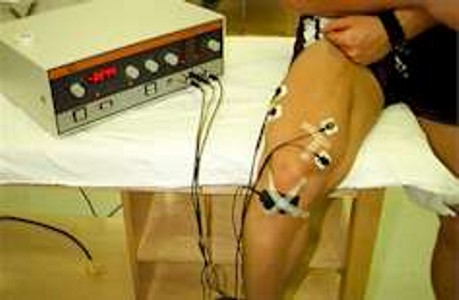 The aim of this study was to develop a long-term EMG-based analysis procedure
that separates parkinsonian tremor from essential tremor.
A
formula based on three parameters : tremor occurrence, mean tremor frequency and
standard deviation of phase was established and predicted the correct diagnosis
in 93% of patients. When this method was used with new patients in the early
stages of tremor, it yielded a correct diagnosis in 100% of cases, making it a
reliable means of differentiating between parkinsonian and essential tremor.
The aim of this study was to develop a long-term EMG-based analysis procedure
that separates parkinsonian tremor from essential tremor.
A
formula based on three parameters : tremor occurrence, mean tremor frequency and
standard deviation of phase was established and predicted the correct diagnosis
in 93% of patients. When this method was used with new patients in the early
stages of tremor, it yielded a correct diagnosis in 100% of cases, making it a
reliable means of differentiating between parkinsonian and essential tremor.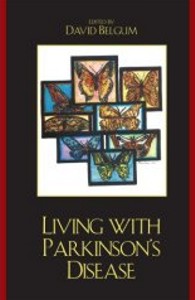 Publisher's
description : Living with Parkinson's Disease explores the disease
from a professional point of view and includes short pieces, written
primarily by Parkinson's patients, about what it is like to experience the
disease. Some of these short pieces are poems and short essays, but all
are poignant and of extraordinary use to doctors, patients, researchers,
and coping family members. This work also includes more general articles, which relate to a wider perspective than the
description of Parkinson's. The two introductory articles are written by
doctors and cover the basic description of Parkinson's Disease. This book
is a practical reference for all who come in contact with this
debilitating and tragic condition.�
Publisher's
description : Living with Parkinson's Disease explores the disease
from a professional point of view and includes short pieces, written
primarily by Parkinson's patients, about what it is like to experience the
disease. Some of these short pieces are poems and short essays, but all
are poignant and of extraordinary use to doctors, patients, researchers,
and coping family members. This work also includes more general articles, which relate to a wider perspective than the
description of Parkinson's. The two introductory articles are written by
doctors and cover the basic description of Parkinson's Disease. This book
is a practical reference for all who come in contact with this
debilitating and tragic condition.�
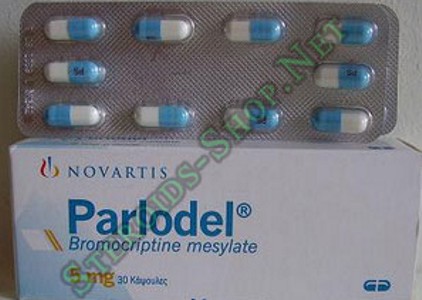 When used alongside L-dopa a systematic review
revealed no evidence to support the use of bromocriptine and L-dopa as a
strategy to prevent or delay the onset of motor complications in
Parkinson's Disease. Results showed no evidence of consistent differences
between treatment groups concerning the occurrence and severity of motor
complications, scores of impairment and disability, or the occurrence of
side effects. When used on its own, bromocriptine was found to be
marginally beneficial in only one trial. All other trials showed no
benefit regarding disability, and no improvement.
When used alongside L-dopa a systematic review
revealed no evidence to support the use of bromocriptine and L-dopa as a
strategy to prevent or delay the onset of motor complications in
Parkinson's Disease. Results showed no evidence of consistent differences
between treatment groups concerning the occurrence and severity of motor
complications, scores of impairment and disability, or the occurrence of
side effects. When used on its own, bromocriptine was found to be
marginally beneficial in only one trial. All other trials showed no
benefit regarding disability, and no improvement. "While there have been significant
advances in stem cell science and technology, research involving
human-animal combinations is required for further progress," the BAC
claimed. Mice with human brain cells could be used as test beds for
Parkinson's disease drugs, they said. Singapore has the technology to
create these "mixed animals" that can be created by infusing a human
nucleus, the cell's nerve centre, with an animal egg or cell, the BAC
chairman stated. The research would likely involve small amounts of human
genetic tissue combined with distantly related animals such as rats or
mice, he said. Websites against such research say scientists would be
playing God by creating half-human, half-animal monstrosities. For more
information go to
the
"While there have been significant
advances in stem cell science and technology, research involving
human-animal combinations is required for further progress," the BAC
claimed. Mice with human brain cells could be used as test beds for
Parkinson's disease drugs, they said. Singapore has the technology to
create these "mixed animals" that can be created by infusing a human
nucleus, the cell's nerve centre, with an animal egg or cell, the BAC
chairman stated. The research would likely involve small amounts of human
genetic tissue combined with distantly related animals such as rats or
mice, he said. Websites against such research say scientists would be
playing God by creating half-human, half-animal monstrosities. For more
information go to
the
 The resulting embryo contains only a tiny amount of
animal DNA
(around 0.1%), with the rest human. The embryo would be grown in a lab
and within a week would have divided to form a tiny ball of around 200
cells. Scientists believe they could provide an invaluable source of
embryonic stem cells for use in research in human diseases. The national
director of the Society for the Protection of Unborn Children (SPUC) said:
"The HFEA decision represents a disastrous setback for human dignity in
Britain. The deliberate blurring of the boundaries between humans and
other species is wrong and strikes at the heart of what makes us human."� For more information go to
the
The resulting embryo contains only a tiny amount of
animal DNA
(around 0.1%), with the rest human. The embryo would be grown in a lab
and within a week would have divided to form a tiny ball of around 200
cells. Scientists believe they could provide an invaluable source of
embryonic stem cells for use in research in human diseases. The national
director of the Society for the Protection of Unborn Children (SPUC) said:
"The HFEA decision represents a disastrous setback for human dignity in
Britain. The deliberate blurring of the boundaries between humans and
other species is wrong and strikes at the heart of what makes us human."� For more information go to
the
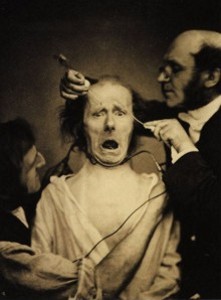 The following year,
The following year,  Due to physical
assessments being made, it is now known that toxic quantities of
BMAA originate from several other food sources, that include flying foxes. Flying
foxes are the largest bats in the world. Their wing span is as wide as a
tall man.� Flying foxes were once eaten in large quantities by the
Chamorros, who are the worst affected by BMAA. This research paper critically
evaluates studies directed at establishing a model of BMAA-induced
Parkinson's Disease symptoms and its implications.
Due to physical
assessments being made, it is now known that toxic quantities of
BMAA originate from several other food sources, that include flying foxes. Flying
foxes are the largest bats in the world. Their wing span is as wide as a
tall man.� Flying foxes were once eaten in large quantities by the
Chamorros, who are the worst affected by BMAA. This research paper critically
evaluates studies directed at establishing a model of BMAA-induced
Parkinson's Disease symptoms and its implications.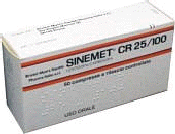 When the potential harm of dopamine was assessed it was found to
cause motor dysfunctions
and progressive neurodegeneration within
weeks. The neurodegeneration was accompanied by oxidative stress. L-dopa
worsened the motor dysfunction� and accelerated neurodegeneration.�
The results provide the first evidence that chronic exposure to
unregulated dopamine alone is sufficient to cause neurodegeneration. The
present study has significant clinical implications, because dopamine
replacement therapy is the mainstay of Parkinson's Disease treatment.
When the potential harm of dopamine was assessed it was found to
cause motor dysfunctions
and progressive neurodegeneration within
weeks. The neurodegeneration was accompanied by oxidative stress. L-dopa
worsened the motor dysfunction� and accelerated neurodegeneration.�
The results provide the first evidence that chronic exposure to
unregulated dopamine alone is sufficient to cause neurodegeneration. The
present study has significant clinical implications, because dopamine
replacement therapy is the mainstay of Parkinson's Disease treatment.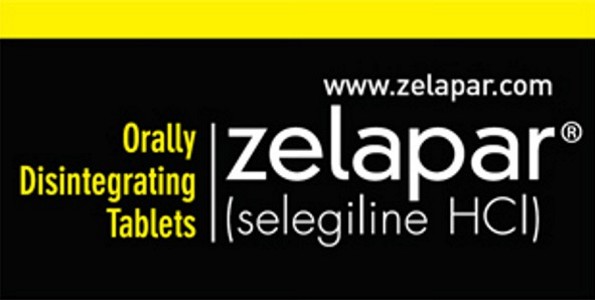 However,
its effects were found to be no different from the effect of a placebo. So
effectively it did not have any of
the effect intended for it. Despite this,
patients perceived a small improvement when taking Selegiline ODT, and
clinicians perceived a strong improvement - even though
there was none.� The outcome is consistent with another study whose
results showed little change� in "off" time with Selegiline ODT.
However,
its effects were found to be no different from the effect of a placebo. So
effectively it did not have any of
the effect intended for it. Despite this,
patients perceived a small improvement when taking Selegiline ODT, and
clinicians perceived a strong improvement - even though
there was none.� The outcome is consistent with another study whose
results showed little change� in "off" time with Selegiline ODT. 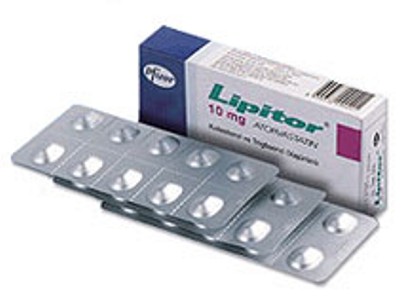 They observed a higher frequency of statin use
amongst people that did not have Parkinson's Disease. There was
also a strong relationship between the dose and the likelihood of having
Parkinson's Disease. The more somebody took, the less likely they were to
have Parkinson's Disease. This was even more true the longer somebody had
been using statins. There was a 60% to 70% reduction in the risk of
Parkinson's Disease for each statin except pravastatin. The researchers do
not know if statins are the direct cause of this greatly reduced proneness
to Parkinson's Disease, or by which means they could act.
They observed a higher frequency of statin use
amongst people that did not have Parkinson's Disease. There was
also a strong relationship between the dose and the likelihood of having
Parkinson's Disease. The more somebody took, the less likely they were to
have Parkinson's Disease. This was even more true the longer somebody had
been using statins. There was a 60% to 70% reduction in the risk of
Parkinson's Disease for each statin except pravastatin. The researchers do
not know if statins are the direct cause of this greatly reduced proneness
to Parkinson's Disease, or by which means they could act.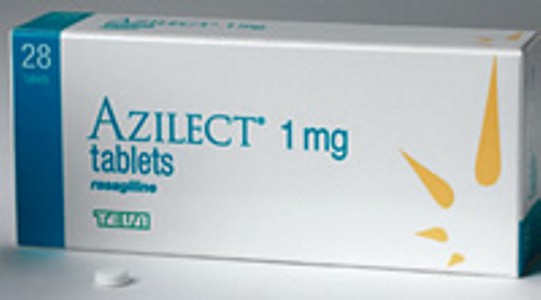 On its own, Rasagiline provided only modest benefit in
treating Parkinson's Disease as a
whole. Results suggest a sustained therapeutic advantage when
Rasagiline is initiated early (before the need for dopaminergic treatments). In patients with advanced
Parkinson's Disease who received
dopaminergic treatments, Rasagiline and entacapone were associated with
reduced "off" time. Rasagiline has been
found to have neuroprotective properties that may be independent of MAO-B
inhibition. No details of the side effects or long term after effects
of Rasagiline were provided.
On its own, Rasagiline provided only modest benefit in
treating Parkinson's Disease as a
whole. Results suggest a sustained therapeutic advantage when
Rasagiline is initiated early (before the need for dopaminergic treatments). In patients with advanced
Parkinson's Disease who received
dopaminergic treatments, Rasagiline and entacapone were associated with
reduced "off" time. Rasagiline has been
found to have neuroprotective properties that may be independent of MAO-B
inhibition. No details of the side effects or long term after effects
of Rasagiline were provided.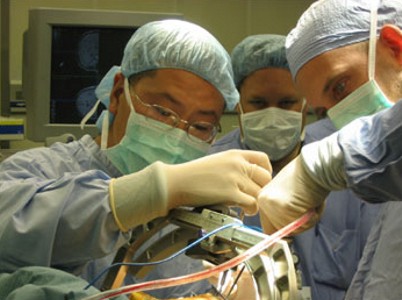 Researchers
found
that the simultaneous implantation of
multiple electrodes does not increase the risk of bleeding or any other
major intracranial complication. The use of multiple electrodes also
resulted in better motor results when compared with patients who underwent
DBS that was guided with a single electrode. There were significantly more
improvements in patients' tremor and rigidity, and their symptom scores
when using multiple electrodes. However, patients treated with multiple
electrodes also showed subtle deterioration in their neuropsychological
functions, particularly in memory function.
Researchers
found
that the simultaneous implantation of
multiple electrodes does not increase the risk of bleeding or any other
major intracranial complication. The use of multiple electrodes also
resulted in better motor results when compared with patients who underwent
DBS that was guided with a single electrode. There were significantly more
improvements in patients' tremor and rigidity, and their symptom scores
when using multiple electrodes. However, patients treated with multiple
electrodes also showed subtle deterioration in their neuropsychological
functions, particularly in memory function. 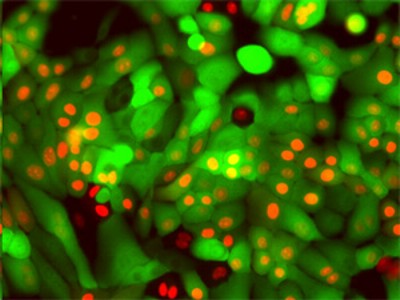 The
blood
brain barrier is a membrane that usually prevents most substances from
gaining access to the brain, and so consequently prevents many substances
from having any medical effect. Pre-clinical evidence showed the ability
of AD4 to pass the blood brain barrier, to protect cells from oxidative
damage, to protect neuronal cells from damage, and to possess low
toxicity. It is intended that AD4 be taken alongside other treatments for
Parkinson's Disease in order to prevent the cell damage that occurs in
Parkinson's Disease. For more information go to
the
The
blood
brain barrier is a membrane that usually prevents most substances from
gaining access to the brain, and so consequently prevents many substances
from having any medical effect. Pre-clinical evidence showed the ability
of AD4 to pass the blood brain barrier, to protect cells from oxidative
damage, to protect neuronal cells from damage, and to possess low
toxicity. It is intended that AD4 be taken alongside other treatments for
Parkinson's Disease in order to prevent the cell damage that occurs in
Parkinson's Disease. For more information go to
the
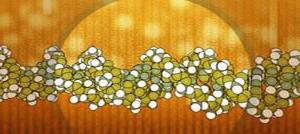 alpha-synuclein
is a key feature in causing Parkinson's Disease. So researchers aim to
reduce the formation (the expression) of alpa-synuclein.� They will
also assess whether this slows the progression of the disorder. No drugs
exist that are able to achieve this. So if successful the researchers
state that they would then have to develop drugs that were able to reduce
the formation of alpa-synuclein.
For more information go to the
alpha-synuclein
is a key feature in causing Parkinson's Disease. So researchers aim to
reduce the formation (the expression) of alpa-synuclein.� They will
also assess whether this slows the progression of the disorder. No drugs
exist that are able to achieve this. So if successful the researchers
state that they would then have to develop drugs that were able to reduce
the formation of alpa-synuclein.
For more information go to the
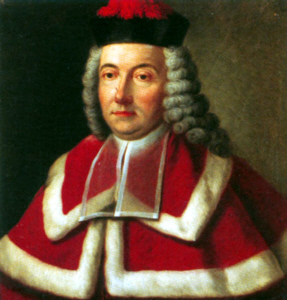 However,
Francois Boissier
de Sauvages de la Croix (1706-1767) had already provided one of the clearest
descriptions
there had ever been of a Parkinsonism-like condition in 1763, well before
James Parkinson. Sauvages de la Croix was a French physician and a
botanist.
For more information
go to
However,
Francois Boissier
de Sauvages de la Croix (1706-1767) had already provided one of the clearest
descriptions
there had ever been of a Parkinsonism-like condition in 1763, well before
James Parkinson. Sauvages de la Croix was a French physician and a
botanist.
For more information
go to
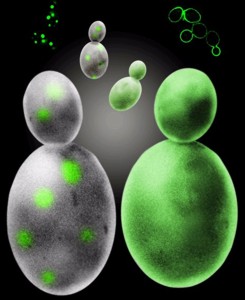 Mutant forms of alpha-synuclein found in
some people with Parkinson's Disease are
not readily disposed of and prevent the disposal of other unwanted
substances. Other
modified forms of alpha-synuclein can be found in the brains of all people
with Parkinson's Disease. It is proposed that dopamine, which normally
relieves Parkinson's Disease, alters alpha-synuclein so that it can not
enter the lysosomes (the rubbish containers that would normally get rid of
it). This interferes with the removal of other damaging elements. It is
suggested that this inability to remove damaged elements explains the
excessive cell damage found in most people with Parkinson's disease.
For more information go to the
Mutant forms of alpha-synuclein found in
some people with Parkinson's Disease are
not readily disposed of and prevent the disposal of other unwanted
substances. Other
modified forms of alpha-synuclein can be found in the brains of all people
with Parkinson's Disease. It is proposed that dopamine, which normally
relieves Parkinson's Disease, alters alpha-synuclein so that it can not
enter the lysosomes (the rubbish containers that would normally get rid of
it). This interferes with the removal of other damaging elements. It is
suggested that this inability to remove damaged elements explains the
excessive cell damage found in most people with Parkinson's disease.
For more information go to the
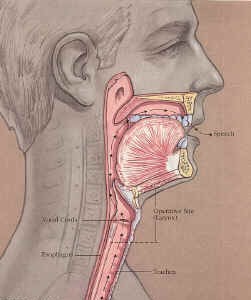 The beneficial effect of L-dopa on muscle control has been well
documented. However, its effect on speech has rarely been objectively
examined.� Consequently, the existing medical literature remains
inconclusive. This paper
aims
to
examine the effect of L-dopa on speech in
people with Parkinson's disease. Their results showed that, under the
effect of L-dopa there was a consistent tendency for increased loudness
and a faster rate of speech. However, this was accompanied by a
greater decay in the intensity of the voice.
The pitch of the voice was unaffected by L-dopa. The ability to articulate
also remained unchanged. L-dopa effectively increased the overall vocal
amplitude and tempo, similar to its well-known effect on limb movement.
However, the effect on the final acoustic effect of a person's speech
may or may not be advantageous, depending on the existing speech profile
of� the individual patient.
The beneficial effect of L-dopa on muscle control has been well
documented. However, its effect on speech has rarely been objectively
examined.� Consequently, the existing medical literature remains
inconclusive. This paper
aims
to
examine the effect of L-dopa on speech in
people with Parkinson's disease. Their results showed that, under the
effect of L-dopa there was a consistent tendency for increased loudness
and a faster rate of speech. However, this was accompanied by a
greater decay in the intensity of the voice.
The pitch of the voice was unaffected by L-dopa. The ability to articulate
also remained unchanged. L-dopa effectively increased the overall vocal
amplitude and tempo, similar to its well-known effect on limb movement.
However, the effect on the final acoustic effect of a person's speech
may or may not be advantageous, depending on the existing speech profile
of� the individual patient. 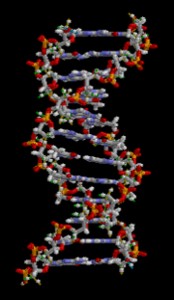 The symptoms of genetic forms of Parkinson�s Disease often appear
to be no different from those of idiopathic Parkinson�s Disease. There are
consequently many people that have genetic Parkinson's Disease that are
completely unaware of it. Genetic Parkinson�s Disease does not normally
cause Parkinson�s Disease on its own. In those affected, it is instead
believed to be an interaction of genetic and other causes. There are now
known to be at least twelve genetic mutations that unequivocally linked to
Parkinson�s Disease : PARK 1/4 (SNCA), PARK 2 (Parkin), PARK 3 (gene
unknown), PARK 5 (UCH-L1), PARK 6 (PTEN-induced kinase 1 or PINK1), PARK 7
(DJ1), PARK 8 (LRRK2), PARK 9 (ATP13A2), PARK 10 (gene unknown), PARK 11
(gene unknown), PARK 12 (gene unknown), PARK 13 (OMI/HTRA2). Each of these
mutations affects a different biochemical function, and greatly differs in
frequency in different ethnic groups.
The symptoms of genetic forms of Parkinson�s Disease often appear
to be no different from those of idiopathic Parkinson�s Disease. There are
consequently many people that have genetic Parkinson's Disease that are
completely unaware of it. Genetic Parkinson�s Disease does not normally
cause Parkinson�s Disease on its own. In those affected, it is instead
believed to be an interaction of genetic and other causes. There are now
known to be at least twelve genetic mutations that unequivocally linked to
Parkinson�s Disease : PARK 1/4 (SNCA), PARK 2 (Parkin), PARK 3 (gene
unknown), PARK 5 (UCH-L1), PARK 6 (PTEN-induced kinase 1 or PINK1), PARK 7
(DJ1), PARK 8 (LRRK2), PARK 9 (ATP13A2), PARK 10 (gene unknown), PARK 11
(gene unknown), PARK 12 (gene unknown), PARK 13 (OMI/HTRA2). Each of these
mutations affects a different biochemical function, and greatly differs in
frequency in different ethnic groups.